What is Bok Choy?
Green and leafy, bok choy is a delightful and dynamic vegetable to utilize in the kitchen. Bok choy goes by many names, but in the Philippines we commonly refer to it as the popular pechay.
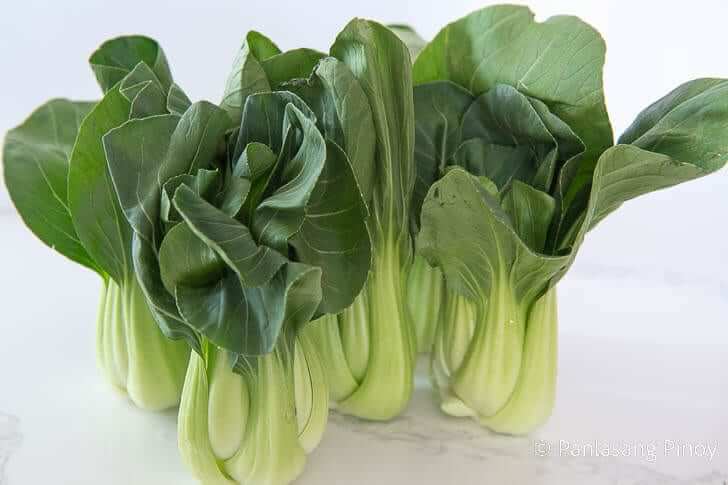
The Philippines is abundant in fruit and vegetable produce, as much of our land area is used for agricultural purposes. This is how we end up enjoying this wide variety of delicious and nutritious ingredients, and bok choy is no exception. You can easily recognize bok choy in supermarkets by its long head, green leaves, and chalk-white stalks. You can cut these up into more easy to eat, bite-sized pieces. Whether we add it to stews to complement the main protein, toss it in a salad, or stir fry it with garlic or soy sauce, bok choy is an all around ingredient, ready to be enjoyed however you like!
Where does bok choy come from?
Bok choy is a member of the Brassica family. The members of this plant group are some of the most commonly consumed vegetables around the world. Some of the members of the Brassica family are as follows:
- Broccoli;
- Kale;
- Rutabaga;
- Collard greens;
- and turnips, among others.
So even from just its family relations, we can already tell bok choy is a powerhouse of deliciousness and also nutrition.
As its other name, Chinese cabbage, suggests, bok choy originated in China, where its people have been cultivating it for over 5,000 years. Bok choy translates to “white vegetable,” even if majority of its composition is a leafy green. Many say bok choy comes from the Yangtze River Delta area of China. Fun fact –– the Yangtze River is the largest river in all of Asia, and the areas surrounding it are some of the richest agricultural areas in the world! It’s no wonder a vibrant vegetable like bok choy thrives in such an environment.
Bok choy’s usage in Asia only spread when it found a home in Korea, where it had been imported in the 1300s. At the time, Korea was famous in Asia for its progressive and advanced society. It was during this period that Koreans began to use the bok choy in new and innovative cooking methods –– like fermenting. That’s right: bok choy’s importation and spread to Asian countries eventually led to the Korean kimchi, a side dish popular not only in Korea but now the rest of the world!
In the Philippines, pechay is a healthy and affordable meal to bring to your dining table. A favorite in markets around the country, bok choy really has come a long way from growing along the side of a Chinese river.
Varities
You can usually divide this vegetable into two categories: regular, and baby, which is essentially the same thing but with smaller leaves. Quite frankly, there isn’t that big a difference between the two other than their sizes. Baby bok choy is harvested earlier, which is the reason behind this size; they mature in about 40 days, whereas regular-sized ones takes 10 days longer. Its leaves are also a little more tender.
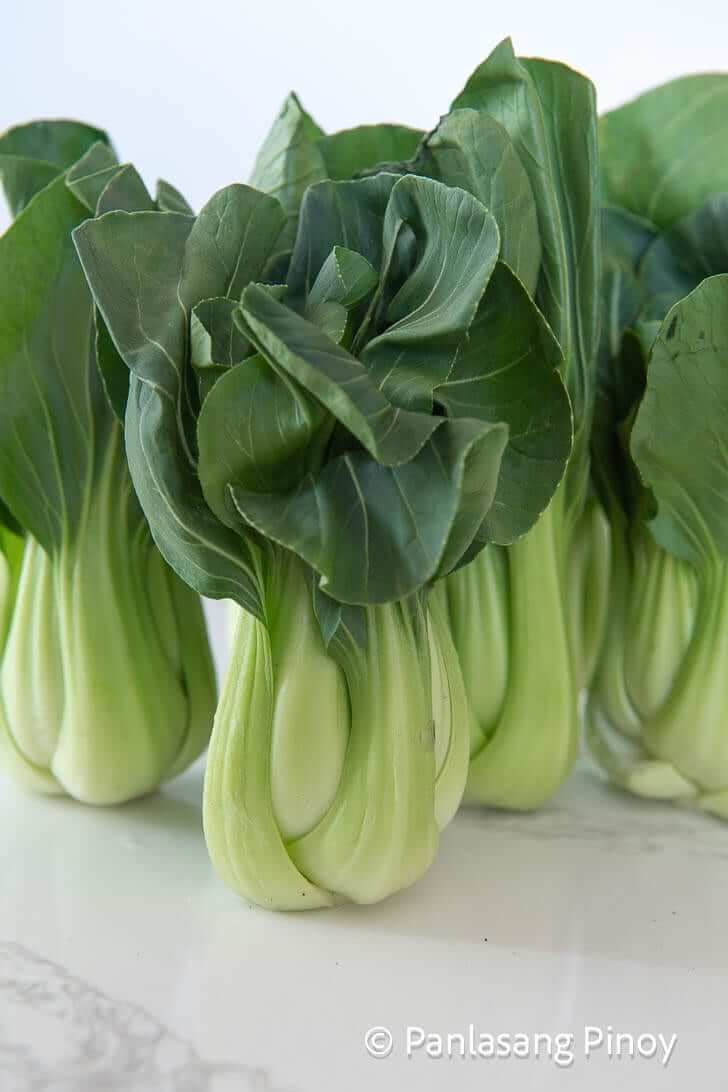
Because of this, the baby variety has a sweeter taste. This variation of the vegetable can also be used as a substitute to many salad greens. Meanwhile, its fuller-sized counterpart is excellent for longer cooking times, and has just the slightest hint of mustard in its taste.
Which type is more commonly used in your home?
How to grow
Pechay is a vegetable easy to grow and harvest –– even from the comfort of your own home. Even someone with very little garden experience can find fulfillment in growing their own.
You can choose to grow this vegetable in a garden or even in small containers. The first important step is to dig the soil to make it loose in the plot you’ll sprinkle your seeds in. It thrives best in warm, sunny areas. But it requires a lot of water; make sure to look after it daily, and it’ll grow in no time. Make sure to thin them out after a while in order for them to grow more freely.
Depending on the weather, it takes about four to six weeks to harvest. Although bok choy does best in hot places, the great thing about it is it truly can grow anywhere. No matter where you are in the world, you’ll be able to enjoy its delicious, refreshing flavors.
How do I pick, prepare and store bok choy?
If you won’t be growing some in your own garden, you always have the option of going out to shop for some. But you should also ensure you are getting it in the most ideal quality. Look for firm bok choy stalks, as well as ones that don’t have brown spots. Also keep an eye out for those with fresh leaves, instead of wilting ones.
But if you end up with a batch that has wilted leaves, make sure to remove the outer wilted leaves when preparing them. Another step to getting your greens ready before cooking is cutting the bok choy’s head in half lengthwise. Also take away the core. Cut the bok choy up into wedges, and shred as well. Then you are just about prepared to start boiling, stir-frying, or taking on whichever cooking method you’ve got for this yummy vegetable!
If you have some left over, or are simply looking to set it aside first, you have a bunch of options for storage. One way is by placing the vegetable in a plastic bag, then putting it in your fridge’s crisper section. You can keep them there for about a week.
For this other method of storage, a simple paper towel will also be of help in keeping your leaves fresh! Begin by cutting the base off, and removing its stalks. Do not dispose of the white stems– these could come in handy for several recipes. Then take a bowl, and pour in some cold water.
Rinse your separated leaves inside, and make sure to get all of the water out by shaking this thoroughly. And then use a paper towel to blot these. Once dry, use new paper towels to wrap these leaves up. Then with your leaves inside rolled up paper towels, put them in a plastic zipper bag. If you keep them in the crisper part of your refrigerator, they should be kept good and fresh for five to six days.
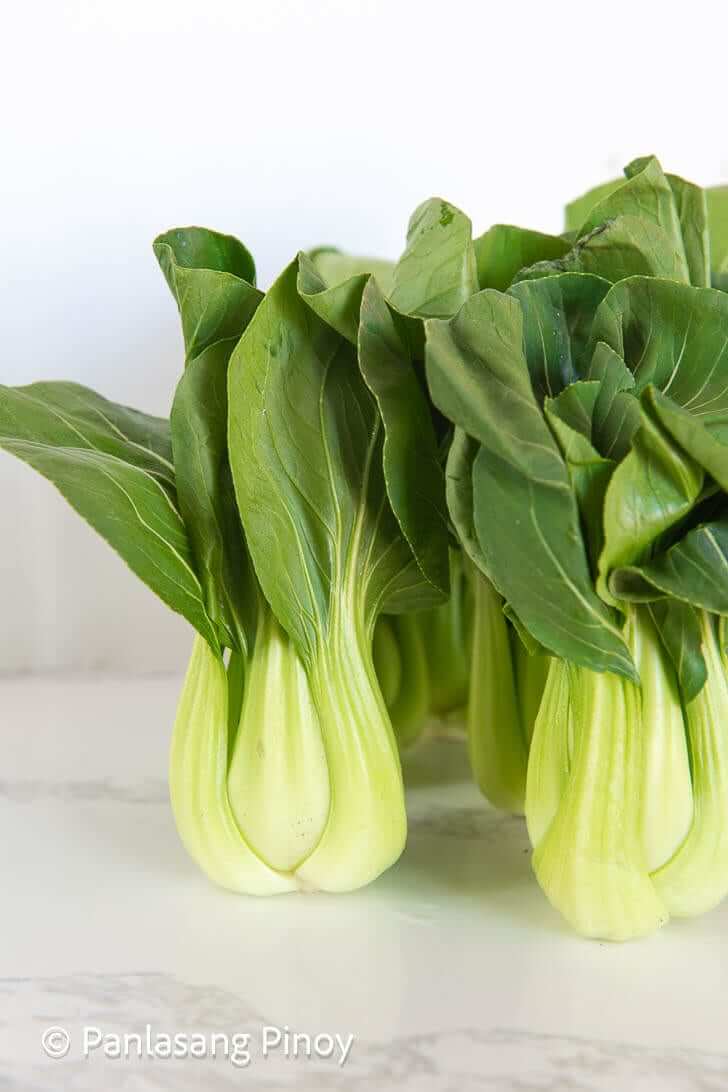
And if you don’t have a plastic bag or paper towels available, you can just utilize some cold water. Fill up a jar with ice cold water, and place your bok choy stalks upright inside. Then put the jar in your refrigerator. This should keep it at a nice quality for one or two days, so use them up by then! Also keep in mind that you have to wash and rinse these well before cooking them.
What are some recipes I can cook bok choy in?
Not only is it incredibly delicious, but it is also very adaptable and versatile! As we mentioned earlier, you can use bok choy in a number of different recipes –– all of which will turn out delightful and refreshing for your kitchen table.
One of the most popular recipes involving this beloved veggie is the classic bok choy stir fry. To stir fry means to cook one or more ingredients in a pan on high heat with very little oil. This is a cooking method also with Chinese origins, which has since spread internationally. You can stir fry almost anything –– meat, vegetables, even noodles and rice. It’s a simple enough recipe to follow, but it’s undoubtedly enjoyable. You usually stir fry this in soy sauce, with garlic and onions to bring more flavor to the humble dish. You can even add mushrooms if you enjoy them, too!
Bok Choy with Garlic and Oyster Sauce is another common, timeless dish you can use bok choy in. This really highlights the freshness of your veggie, which makes it a great, light meal to have for lunch or dinner. One of the best parts about it is its usage of just a small amount of ingredients to create a fresh, flavorful plate of beautiful leafy greens. Built by layers of texture in the soft baby bok choy and surrounding stew from sesame oil and oyster sauce, this makes a refreshing side dish.
But it can also be a viand to have with your plate of newly cooked rice. A little tip I have for making the best of this recipe is by using the most fresh batch of bok choy you have, as it makes a difference in its taste.
Bok choy is a great partner to hearty, flavorful meat and fish dishes. Take, for instance, this Bok Choy Guisado. Cooked with shrimp and pork and served with some patis and sili on the side, this meal goes perfectly with fried fish, like bangus or tilapia.
This dish doesn’t require a very extensive skill set in the kitchen, and doesn’t take a lot of prep time, either! Give yourself a good 35 minutes to do some simply sautéing and stir-frying, and you’ll wind up with this nutrient-packed, vibrant meal. And granted, this dish can taste exquisitely well on its own. But I also recommend trying it with a couple recipes that combine well with its flavor. Have a shot at serving your Bok Choy Guisado with some Fried Tilapia and Fried Bangus!
Another recipe you can make is Sauteed Bok Choy with Shrimp. This dish puts a spin on the classic pechay dish we’re familiar with. Whether you use fresh or frozen shrimp is up to you, but if you’re short on time I advise the latter. Buying frozen shrimp usually saves you the trouble of having to remove it from its shell.
What I also love about this dish is the seamless integration of all of the ingredients together. You get a delicious taste of sherry or cooking wine in the steaming, savory stew. Moreover, the tender bok choy is a comforting component alongside pieces of well-seasoned shrimp. If you are a fan of most Filipino classic dishes with some soup and seafood such as Sinigang, you might enjoy this one quite a lot.
No food is more quintessentially Filipino than adobo. Who wouldn’t recognize that smell of soy sauce and vinegar in the air, or that garlicky, umami taste? Bok Choy Adobo is just another variation or spin on this Filipino classic. Also known as adobong pechay or inadobong pechay, bok choy adobo also goes well with fried fish and rice. The vegetable efficiently soaks up the adobo sauce’s flavor, making it a warm, rich, and delightfully perfect bite.
This is also conveniently one way to have your adobo without any meat. This vegan variation of the soy sauce-infused stew will be quite the refreshing take and alternative on a dish usually had with some chicken or pork. But you won’t be lacking any flavor here, make no mistake. You still have all the essential flavors to make a great adobo dish, perhaps with some brown rice to eat it the healthy way!
There are a myriad of ways to cook bok choy, with each one resulting in a fresh and fantastic meal for you and your loved ones. Whether you steam, boil, or stir fry it, the possibilities are endless! Make the most of your pechay at home by reading up on this article that gives you some essential tips in cooking with these nutritious greens.
What’s your favorite recipe to cook bok choy in? Leave us a comment below!
What are some substitutes for bok choy?
Now that you are all ready with some dishes to prepare with bok choy, you might be looking to buy some of your own. Say you go to the market and you are unable to find any of this delicious vegetable in their stock. Worry no more, as there are a couple of alternatives out there you can use instead!
One of the most common kinds of bok choy requested in recipes is the baby bok choy. If your problem currently is finding this variation, making use of mature bok choy could be a fitting substitute. However, you are likely to need to cut it up in pieces.
And if there are absolutely no kinds of bok choy in where you’re shopping for your food, you could try Napa cabbage. Unfortunately, you will be missing out on the juicy stems that come with bok choy. Nonetheless, this cabbage works surprisingly well with most bok choy recipes out there, especially those that call for stir-frying.
Another fitting alternative is Swiss chard, another leafy green that should be fairly easy to locate in your local grocery. It can pretty much do a good job of replacing mature bok choy. But if the recipe calls for baby bok choy, you may have to cut these up into smaller pieces as well. This is also one of the most ideal substitutes, considering how alike they are in texture and taste.
Because bok choy has a fairly mild flavor and similar texture to many other green leafy vegetables, you have a couple of other options for substitutes. Among these are collard greens, which make for a suitable alternative in terms of texture, but are a bit far off in terms of flavor.
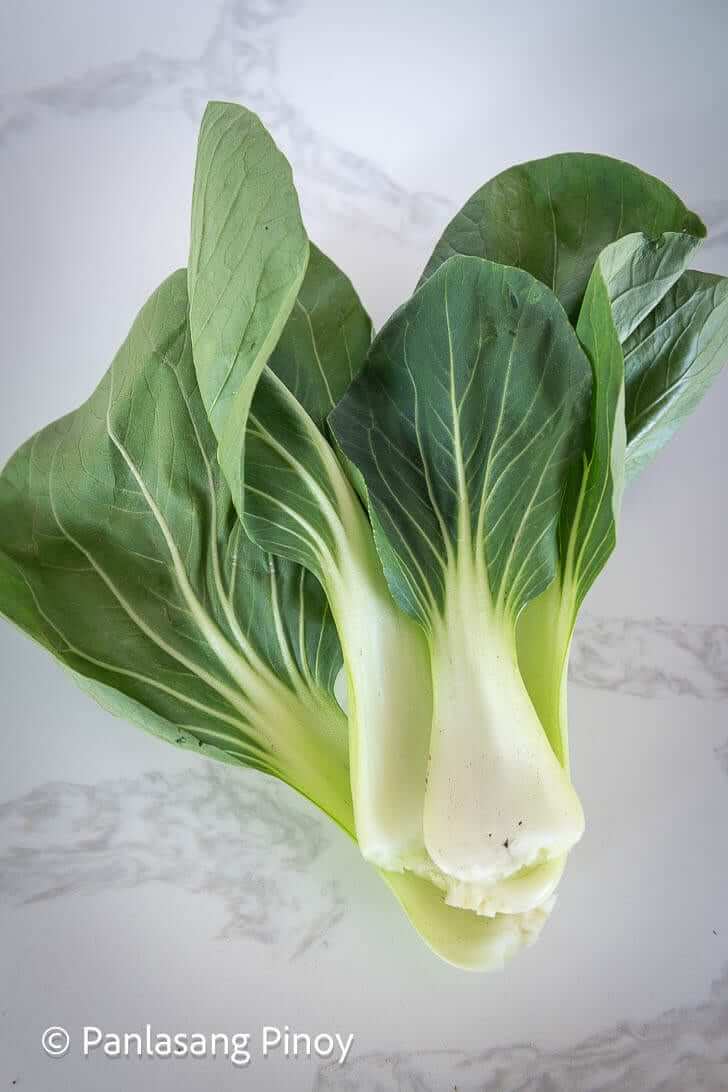
Yu choy, also known as choy sum, are a fairly smaller kind of leafy green. But this works to our favor in replacing bok choy, as their sizes are comparably similar. Furthermore, they hold similar crunchy, semi-bitter flavors.
What nutrients are in bok choy?
As mentioned prior, bok choy is a member of the Brassica family, alongside other popular greens. This classification means that it’s a powerhouse of nutrients, absolutely effective in keeping your body healthy and strong.
Bok choy contains a great amount of folate. Folate is a nutrient otherwise known as Vitamin B, which can help in maintaining and restoring DNA. A lack of folate may lead to mutations in the DNA, which can cause diseases to spread in our bodies. Having enough bok choy and other vegetables with Vitamin B in our diet can help prevent that!
Like other cruciferous vegetables, bok choy really is a great and effective warrior against cancer. With its being a rich source in Vitamins C, E, and beta-carotene, our beloved pechay contains powerful antioxidants that protect cells from damage.
Among some of the other most prominent nutrients in bok choy are Vitamins A and B-6. It also contains iron, phosphorus, and calcium, among others. These play an integral role in bone structure and maintenance. Vitamin K especially can prevent us from experiencing instances of bone fractures.
Apart from the bones and our immune system, bok choy’s potassium and magnesium decrease blood pressure. These same nutrients also keep our heart pumping regularly and healthily, the way it’s meant to.
Bok choy is a naturally grown powerhouse of nutrients. Having it regularly as a part of your diet helps keep your body healthy and happy. And with the myriad of recipes you can make with it, your taste buds will for sure sing!
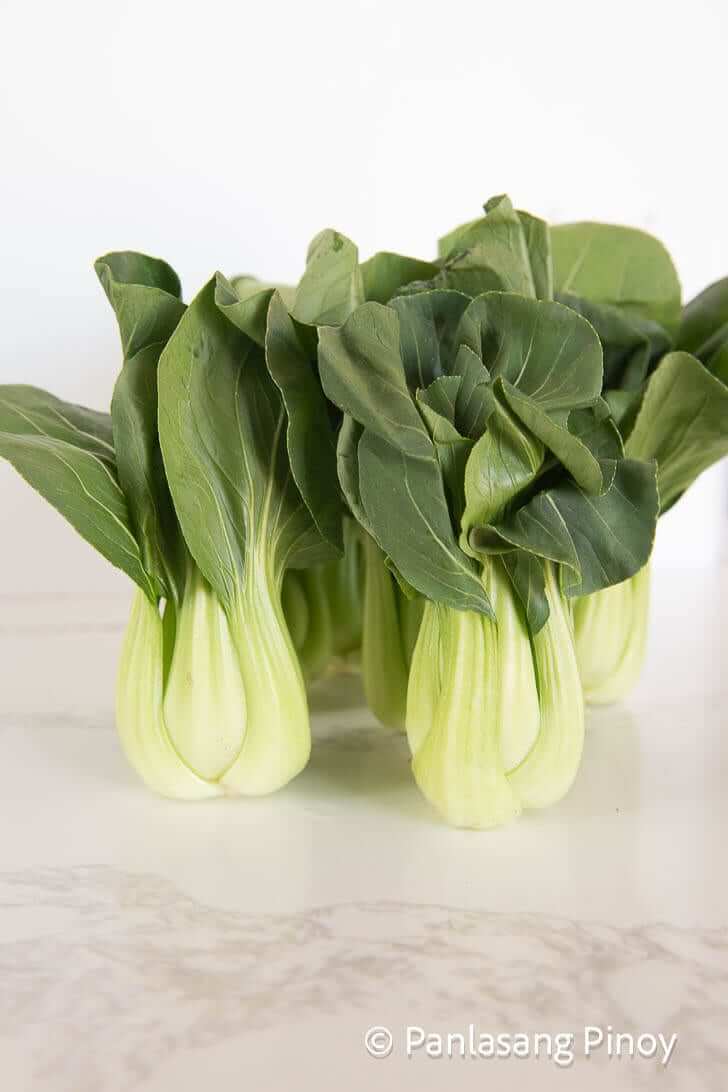
Whether you grow it at home or buy it from the store, bok choy makes a great companion in your kitchen. If you haven’t tried it today, this is your sign!
